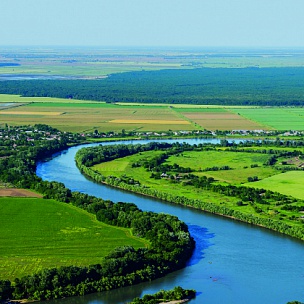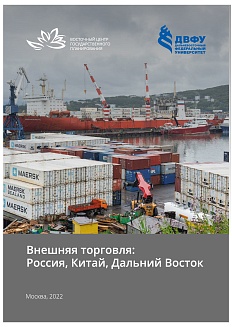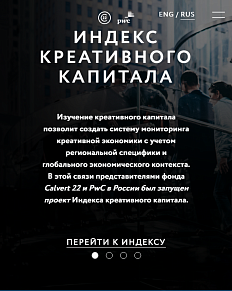The rating developed by the Institute for Complex Strategic Studies (ICSS) makes it possible to assess the effectiveness of the functioning of the agro-industrial complex in the constituent entities of the Russian Federation, to determine the leading entities and to reveal the scale of imbalances in the development of agriculture in the country as a whole. According to the results of the Q1 2020, the rating showed a significant gap between the majority of entities and the leaders, as well as low efficiency of activities in the agro-industrial complex, including some constituent entities of the Russian Federation, which have significant agricultural potential.
Roscongress Foundation analysts highlighted the main theses of this research, accompanying each of them with suitable fragments of video broadcasts of panel discussions held as part of business programs of the key events hosted by the Foundation.
The leaders of the rating were the Krasnodar Territory, Moscow and Voronezh Region. Thus, the first alarming conclusion is that some entities with significant agricultural potential (for example, the Stavropol Territory) were not even included in the top ten of the rating.
Detailed distribution of assessments by entities of each federal district shows that, for example, the subjects of the Central Federal District in general differ quite well, especially in terms of financing (compared to the entities of the Southern Federal District or North Caucasian Federal District).
However, within the Central Federal District, the development of the agro-industrial complex is quite asymmetric — many agricultural entities do not occupy the highest positions in the rating. So, in Ryazan, Smolensk, Tambov, Oryol and Tver Regions there are low rates of agricultural insurance, and the growth rate of exports of agricultural products and profitability. The authors of the study note that Moscow has become one of the leaders in the efficiency of the agro-industrial complex, and this is not surprising — the capital has effective logistics characteristics, and a significant part of legal entities and individual entrepreneurs are also registered in Moscow (in particular, therefore, Moscow is among the leaders in the export of agro-industrial complex products).
The rating also allows to see the scale of differences between entities to assess the uneven development of the industry across the country. The leader in the group of indicators «Financing» in the Q1 2020 was Tula Region, in agricultural insurance — Moscow, the Krasnodar Territory, and in the group of agricultural production — the Krasnodar Territory, the Chechen Republic, Kursk and Moscow Regions.
It is obvious that in Russia, with its climatic diversity, the development of the agro-industrial complex in various entities will be different. However, the rating shows that only a very small number of entities have high rates (three — in terms of production, eight — in agricultural insurance, only one — in terms of financing).
For example, Tula Region was the absolute leader in the group of indicators «Financing» in the Q1 2020, primarily due to the highest volumes and growth rates of lending in the field of food production, as well as the relatively low level of loan delinquencies and its significant reduction compared to last year. On the contrary, the absolute outsiders in terms of financing are the Jewish Autonomous Region, the Chukotka Autonomous District and the Karachay-Cherkess Republic.
In terms of foreign trade, the Republic of Sakha (Yakutia) became an outsider, which in the Q1 2020 did not send agricultural products for export at all — although a year earlier, alcoholic beverages were supplied from the entity to Latvia.
In terms of agricultural insurance, the leaders were Moscow, the Krasnodar Territory (leaders in terms of premiums), the Chuvash Republic (leader in terms of the number of contracts concluded), Samara and Irkutsk Regions (leaders in terms of premium growth and the number of contracts growth, respectively). In terms of agricultural production, the leaders were the Krasnodar Territory, the Chechen Republic, Kursk and Moscow Regions.
Video: https://roscongress.org/sessions/renovatsiya-lnyanogo-kompleksa-rossii/search/#01:30:38.464
The rating also reflects the current state and possible trends in the development of entities in terms of the agro-industrial complex. The cluster with high absolute indicators and high dynamics includes such entities as Bryansk, Kursk and Belgorod Regions and others. The cluster with low indicators and low dynamics included the Nenets Autonomous District, Magadan Region and others.
Based on estimates of absolute and relative indicators as of the Q1 2020, 4 clusters of entities were formed depending on the level of development of the agro-industrial complex.
The cluster of entities with high absolute indicators and high dynamics included 9 entities:
1. Moscow
2. Moscow Region
3. Bryansk Region
4. Kursk Region
5. Belgorod Region
6. Voronezh Region
7. Rostov Region
8. the Krasnodar Territory
9. the Republic of Tatarstan
In the second cluster, the authors of the study included a fairly large number of subjects of the Russian Federation, for example, the Yamalo-Nenets Autonomous District and the Perm Territory. Entities from this cluster are characterized by low absolute indicators of agro-industrial complex development, but significant positive dynamics.
The risk group includes entities with average absolute indicators of agro-industrial complex development and low growth rates. They form the third cluster, which includes such entities of the Russian Federation as the Krasnoyarsk Territory and the Komi Republic.
Entities of the fourth group require special attention (low indicators and low dynamics):
1. the Kabardino-Balkarian Republic
2. The Republic of Ingushetia
3. Arhangelsk Region
4. the Nenets Autonomous District
5. the Khanty-Mansijsk Autonomous District — Yugra
6. the Republic of Tuva
7. the Altai Territory
8. the Zabaikalye Territory
9. Amur region
10. the Jewish Autonomous Region
11. the Khabarovsk Territory
12. The Republic of Sakha (Yakutia)
13. Magadan Region
14. the Chukotka Autonomous District
Video: https://roscongress.org/sessions/sbalansirovannoe-regionalnoe-razvitie/search/#01:27:02.144
See other materials posted in special sections of the Roscongress Information and Analytical System Constituent entities of Russia, Agriculture and Export, dedicated to the development of the agro-industrial complex as one of the most promising and important sectors of the world economy.





